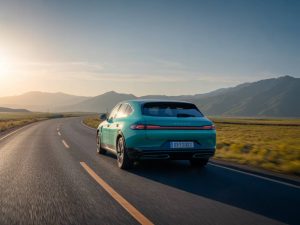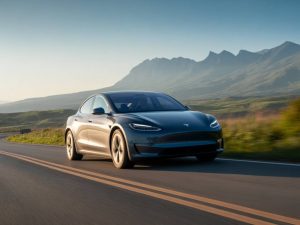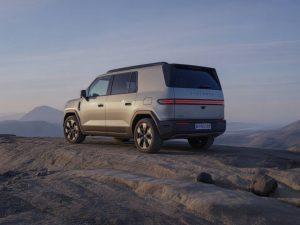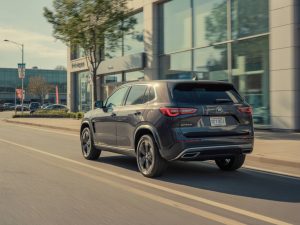Comparing the latest evs: tesla model y vs rivals in 2024
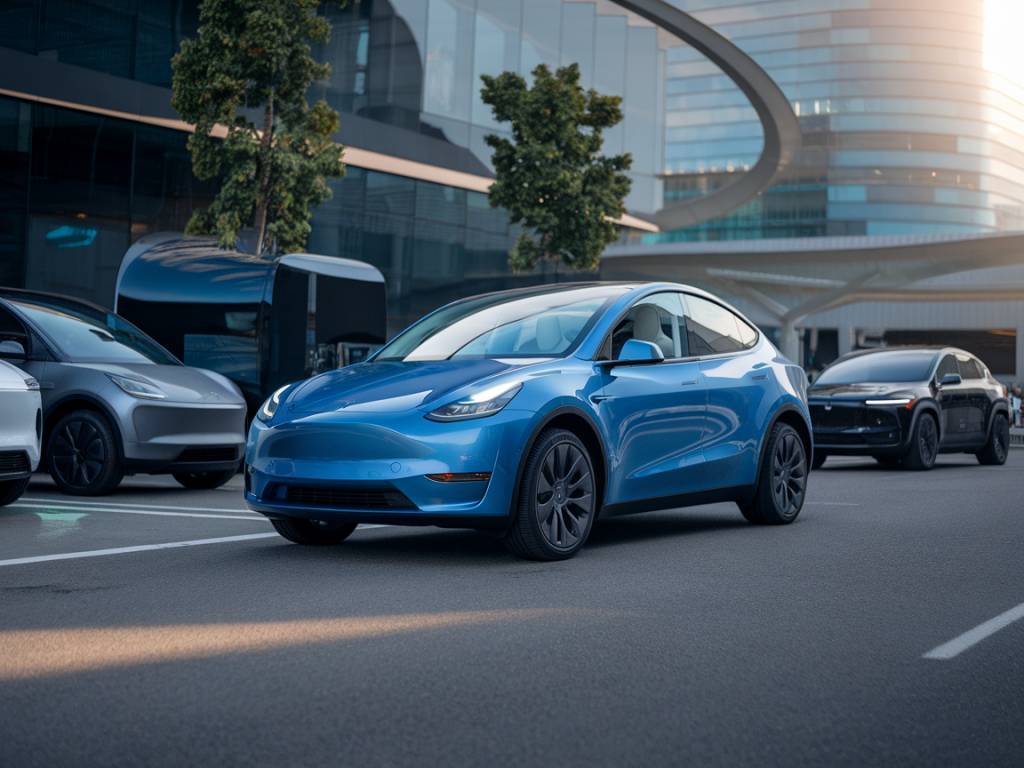
comparing the latest evs: tesla model y vs rivals in 2024
The electric vehicle (EV) market has seen significant growth and innovation in recent years. Among the frontrunners of this revolution is Tesla, with its Model Y becoming a benchmark for other EVs. However, 2024 brings formidable competitors vying for dominance. This article offers a detailed comparison of the Tesla Model Y with some of its latest rivals, focusing on features, performance, range, and overall value.
Performance and Powertrain
When evaluating electric vehicles, performance and powertrain specifications are often crucial factors for potential buyers. The Tesla Model Y boasts impressive acceleration, with its Long Range version reaching 0-60 mph in just 4.8 seconds, and the Performance version doing so in an exhilarating 3.5 seconds. Both variants are equipped with a dual-motor all-wheel-drive (AWD) system, providing robust traction and stability.
Rival EVs in 2024 present strong competition. The Ford Mustang Mach-E, for instance, features a dual-motor AWD setup in its GT variant, enabling it to accelerate from 0-60 mph in approximately 3.5 seconds. Similarly, the Audi Q4 e-tron offers respectable performance, although slightly less aggressive, with its dual-motor setup providing a balanced and smooth driving experience.
Range and Charging
Range anxiety remains a key concern for EV buyers, making the vehicle’s driving range and charging capabilities paramount. The Tesla Model Y Long Range offers an impressive EPA-estimated range of about 330 miles, making it one of the market leaders. Its Supercharging network further enhances convenience, with thousands of fast-charging stations nationwide.
The Ford Mustang Mach-E Premium variant offers a competitive 305 miles of range with its extended battery pack. While this doesn’t quite match the Tesla Model Y, it still provides ample range for most users’ daily needs. Additionally, Ford’s partnership with Electrify America ensures broad access to fast-charging stations.
Another key player is the Volkswagen ID.4, offering a range of up to 275 miles in its Pro S variant. Although it falls short of the Tesla Model Y’s range, the ID.4 compensates with accessible pricing and a growing network of charging stations, making it a viable option for many consumers.
Interior and Technology
The interior and technology offerings of an EV can significantly influence a buyer’s decision. The Tesla Model Y features a minimalist yet highly modern interior design dominated by a 15-inch touchscreen that controls almost all vehicle functions. Tesla’s software is renowned for its user-friendly interface, over-the-air updates, and features like Autopilot, providing an early glimpse into autonomous driving capabilities.
The Ford Mustang Mach-E also prides itself on a tech-savvy interior, featuring a 15.5-inch central touchscreen with the latest SYNC 4A system. It supports both Apple CarPlay and Android Auto, offering seamless smartphone integration. The digital instrument panel adds to the futuristic feel, while the interior materials and design reflect Ford’s attention to comfort and quality.
In contrast, the Audi Q4 e-tron offers a more traditional luxury feel, with high-quality materials and a host of technological features. The 10.1-inch central touchscreen and 10.25-inch digital cockpit deliver essential information intuitively, while the Audi MMI system integrates navigation and infotainment efficiently.
Safety and Driver Assistance
Safety remains a top priority for EV buyers, and the Tesla Model Y excels in this regard, having earned top safety ratings from various institutions. It comes equipped with a suite of advanced driver-assistance systems (ADAS), including adaptive cruise control, lane-keeping assist, and automatic emergency braking.
The Mustang Mach-E, too, emphasizes safety with its Co-Pilot360 suite, which offers features like evasive steering assist, blind-spot monitoring, and intersection assist. These features aim to provide the driver with additional support, making the everyday driving experience safer and more comfortable.
Audi’s Q4 e-tron offers comprehensive safety features as well, with its Pre Sense system that prepares the vehicle for an impending collision by tightening seat belts and closing windows. The adaptive cruise assist and 360-degree cameras further enhance its safety credentials, ensuring a high level of protection for occupants.
Price and Value
When discussing EVs, price and overall value are crucial considerations for most buyers. The Tesla Model Y Long Range starts at around $54,990, with the Performance variant priced at approximately $61,990. While these prices may seem steep, the Model Y offers a blend of performance, range, and technology that justifies the investment for many.
On the other hand, the Ford Mustang Mach-E offers a more accessible starting price at around $48,000 for the Select trim, moving up to about $61,000 for the GT Performance Edition. This pricing structure makes the Mach-E an appealing option for those looking to balance budget with capability.
The Volkswagen ID.4 stands out for its affordability, starting at around $38,000 for the Pro trim and reaching approximately $50,000 for the Pro S with Gradient package. This pricing, coupled with federal and state incentives, makes the ID.4 an attractive option for budget-conscious buyers.
Driving Experience
The driving experience of an EV can vary greatly between models, influenced by elements such as handling, ride comfort, and noise levels. The Tesla Model Y is praised for its responsive handling and agile nature, attributed to its low center of gravity and sophisticated suspension system. The ride is firm yet comfortable, offering an engaging driving experience.
The Ford Mustang Mach-E takes a slightly different approach, emphasizing a smooth and composed ride along with sharp handling characteristics. The Mach-E delivers a sporty feel, especially in its GT variant, making it an exciting choice for enthusiasts.
The Audi Q4 e-tron offers a refined driving experience, characterized by a smooth ride and excellent noise insulation. Its driving dynamics are well-balanced, appealing to those who prioritize comfort and luxury over sheer performance. The Q4 e-tron’s precise steering and competent chassis ensure a pleasant and controlled drive.
Design and Aesthetics
The visual appeal of an EV often plays a significant role in a buyer’s decision-making process. The Tesla Model Y features a sleek, modern design with a clean silhouette and aerodynamic lines. Its minimalistic approach extends to the exterior, with flush door handles and a streamlined profile.
The Ford Mustang Mach-E blends classic Mustang design elements with contemporary EV aesthetics. Its aggressive front grille, sculpted hood, and dynamic stance give it a distinctive look that stands out from the crowd. The Mach-E’s design successfully merges the heritage of the Mustang with the future of electric mobility.
Audi’s Q4 e-tron exhibits a more traditional luxury SUV appearance, with bold lines and a commanding presence. Its signature Singleframe grille and LED lighting elements contribute to a premium look, while the meticulous attention to detail reflects Audi’s commitment to design excellence.
Environmental Impact
One of the key reasons for adopting electric vehicles is the reduction of environmental impact. The Tesla Model Y, Ford Mustang Mach-E, and Audi Q4 e-tron all contribute significantly to reducing greenhouse gas emissions compared to traditional internal combustion engine vehicles. The use of clean energy sources for charging further enhances their environmental benefits.
Tesla’s commitment to sustainability extends beyond its vehicles, with initiatives such as solar energy solutions and battery recycling programs. The company’s holistic approach aims to create a sustainable ecosystem for its products.
Ford has also made strides in sustainability, focusing on manufacturing processes and materials. The Mach-E’s use of recycled materials in its interior highlights Ford’s efforts to minimize environmental impact.
Audi’s e-tron range is part of the company’s larger strategy to achieve net carbon neutrality by 2050. The Q4 e-tron’s production process includes the use of renewable energy, and Audi’s firm stance on sustainability reflects its long-term commitment to the environment.
In summary, the Tesla Model Y faces strong competition from the likes of the Ford Mustang Mach-E and Audi Q4 e-tron in 2024. While each vehicle has its unique strengths, the Model Y’s superior range, innovative technology, and robust performance keep it at the forefront of the EV market. However, the Mach-E and Q4 e-tron offer compelling alternatives with their distinctive features, making the choice between these vehicles ultimately dependent on personal preferences and priorities.

